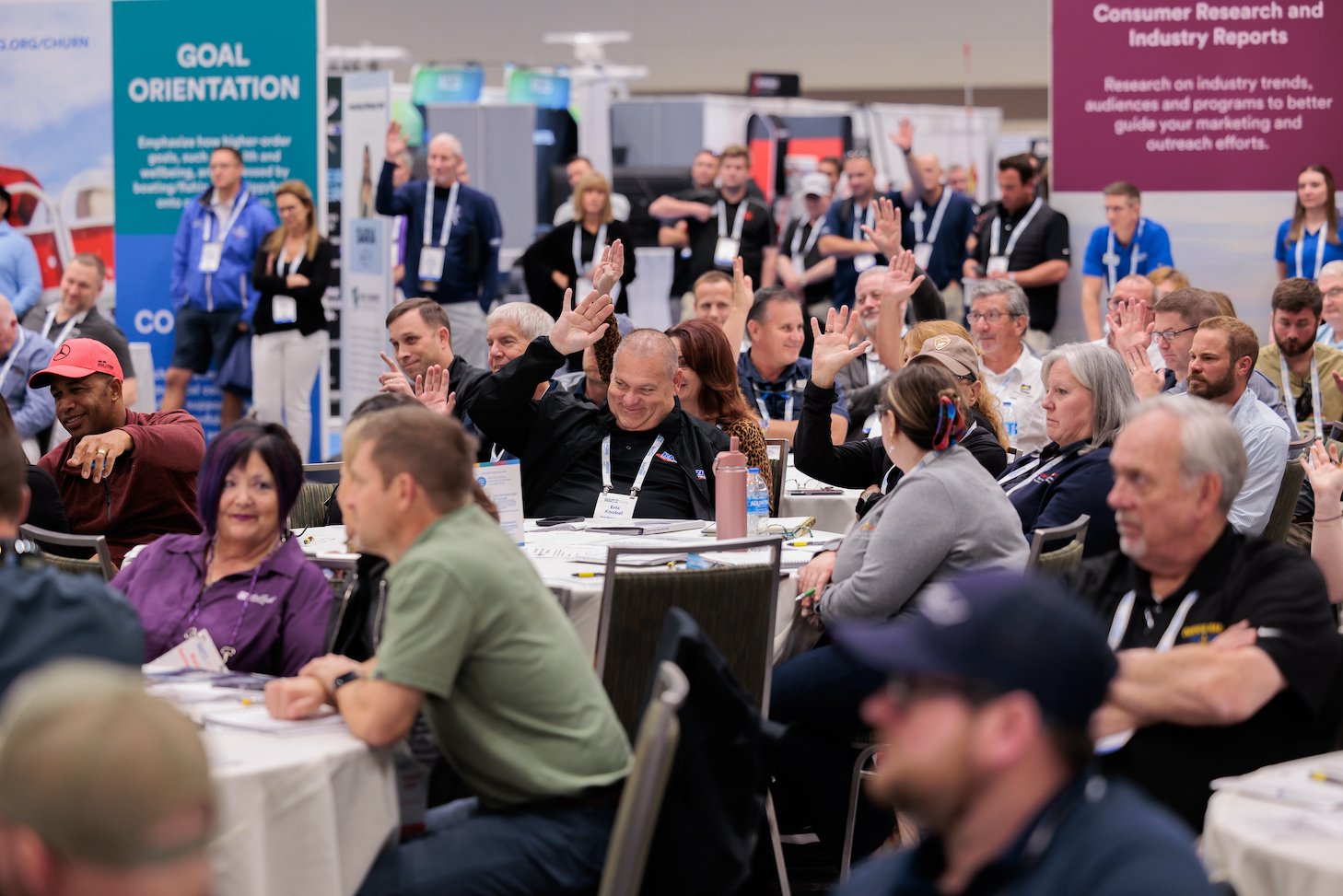The relationship among dealers, manufacturers and customers is more critical than ever.
By Matt Gruhn, MRAA President
In 2018, an eye-opening report surfaced about the health of the marine industry. It revealed the attrition rates of first-time boat buyers. Close to 40% were selling their boats and leaving boating within the first five years of ownership.
The attention placed on boater retention — as opposed to a sole focus on recruiting future boaters — became a key industry initiative. While an emphasis on the overall customer experience has always existed, the attrition rates provided a rallying cry for greater focus.
More research and data underscored the importance of that experience to the overall health of boating in 2021. Left Brain Marketing, at the request of the Recreational Boating and Fishing Foundation, Discover Boating and the Marine Retailers Association of the Americas, led a research project that sought to understand challenges and opportunities to enhance boat ownership. The study found that nearly 90% of boat buyers, shortly after the point of purchase, said they would “definitely” or “probably” remain a boat owner for at least the next five years.
In other words, first-time boat buyers intend to remain in boating for the long term, but there is a significant gap between their intention and reality. What happens between the purchase and year five that causes boat owners to flee?
Defining the Ownership Experience
By the end of 2019, the 40% attrition figure had been discussed widely across the industry. Then, the pandemic hit in early 2020, creating a marketplace that led to record numbers of first-time boat buyers.
In the ensuing years, the frenzied environment created customer-experience problems. Suppliers were frustrated by overseas restrictions that shut down their ability to deliver parts to U.S.-based boatbuilders. Manufacturers were frustrated by suppliers that couldn’t deliver parts, components, resins and materials necessary to build boats. Dealers were frustrated because they could sell every boat they could get their hands on, but they couldn’t get enough boats to satisfy all of their potential customers.
Boats that dealers did receive often were missing key components, as manufacturers were forced to short-ship boats with missing parts just to get product into dealer showrooms and on the water. With consumer demand at an all-time high, boats deemed operational — those missing latches, as opposed to engines, for example — were delivered to customers with the promise of installation at a later date.
Given those challenges, many industry experts fear that the five-year attrition rate is at risk of worsening. It’s easy to understand why. Pandemic-era buyers experienced lower product quality. The price of boats increased significantly, so the cost of ownership started off on the wrong foot. Maintenance requirements increased as quality issues arose. Boater training suffered as dealerships hurried the delivery process. The only thing that seemed to work in the marine industry’s favor was the frequency of boat usage — in a socially distanced world, boating was among the most popular pursuits. Unfortunately, frequent usage led to a greater demand for repairs and maintenance, when dealership service departments were already maxed out.
All of which brings us back to the risk of greater attrition as we face the reality that the world has returned to restaurants, travel, concerts, youth athletics and more — all competitors to the free time consumers had allocated toward boating during the past four years.
Complexity in Customer Experience
Across the marine industry, companies measure the customer experience through the eyes of Customer Satisfaction Index and Net Promoter scores. Manufacturers that attain the highest scores are recognized at industry events. Dealerships that excel are acknowledged at dealer meetings.
To emphasize the importance of these scores, manufacturers provide dealers with consequential financial incentives, such as higher warranty reimbursement rates. The dealers’ higher scores lead to manufacturers’ higher scores, which ultimately translate into a great marketing story that may encourage consumers to buy one brand’s product instead of another.
The drive to attain these higher scores, though, threatens to mask the need for real deliverables when it comes to the customer experience. To begin with, we must understand that customer service is transactional in nature. A customer comes into the dealership with a need, and the dealership fulfills that need. That’s customer service. Customer satisfaction, then, is a measurement of the level of satisfaction with that interaction, with the transaction.
Customer experience, on the other hand, as defined by Theresa Syer of Syer Hospitality Group, a frequent trainer in dealer education programs offered by the MRAA, is the sum total of all interactions with a business. It includes experiences consumers have with a website, phone interactions, the greeting at the store, the engagement with a salesperson, the brief but telling interaction with the lot attendant, the product quality, moments of customer service, and all other interactions with the business. The quality of the overall experience, as reinforced by the Left Brain study, includes inputs from people and products alike — from the manufacturer and the dealership — as well as several factors intertwining the people and products, such as financial considerations.
To underscore the dealers’ and manufacturers’ shared accountability to the customer experience, consider insights from a pre-pandemic data point offered by way of a study by Avala Marketing Group, now known as Rollick. As the administrators of the National Marine Manufacturers Association’s customer satisfaction program, they looked deeper at the results and identified that some of the highest correlated inputs to overall boat satisfaction — that is, satisfaction with the product itself — include the “overall purchase experience” (at the dealership) and the question, “Would you recommend this dealer?”
In fact, of all of the questions related to the overall satisfaction with the boat, “Would you recommend this dealer?” was more highly correlated to overall boat satisfaction than some of the questions specifically related to the product itself.
“What this tells us,” they noted at the time, “is that a customer’s happiness with the dealer experience can override dissatisfaction with the product. But conversely, a poor dealer experience can cause the customer to abandon that brand forever.”
So in the pursuit of providing a world-class customer experience for today’s boat owners, it becomes clearer that the path to doing so requires a strong, collaborative effort by the dealer and the manufacturer. This reality justifies the need to measure and have deeper discussions surrounding this critical dealer-manufacturer relationship and its significance in delivering on the promise of the boating lifestyle.
This article was originally published in the September 2024 issue of Trade Only Magazine.




